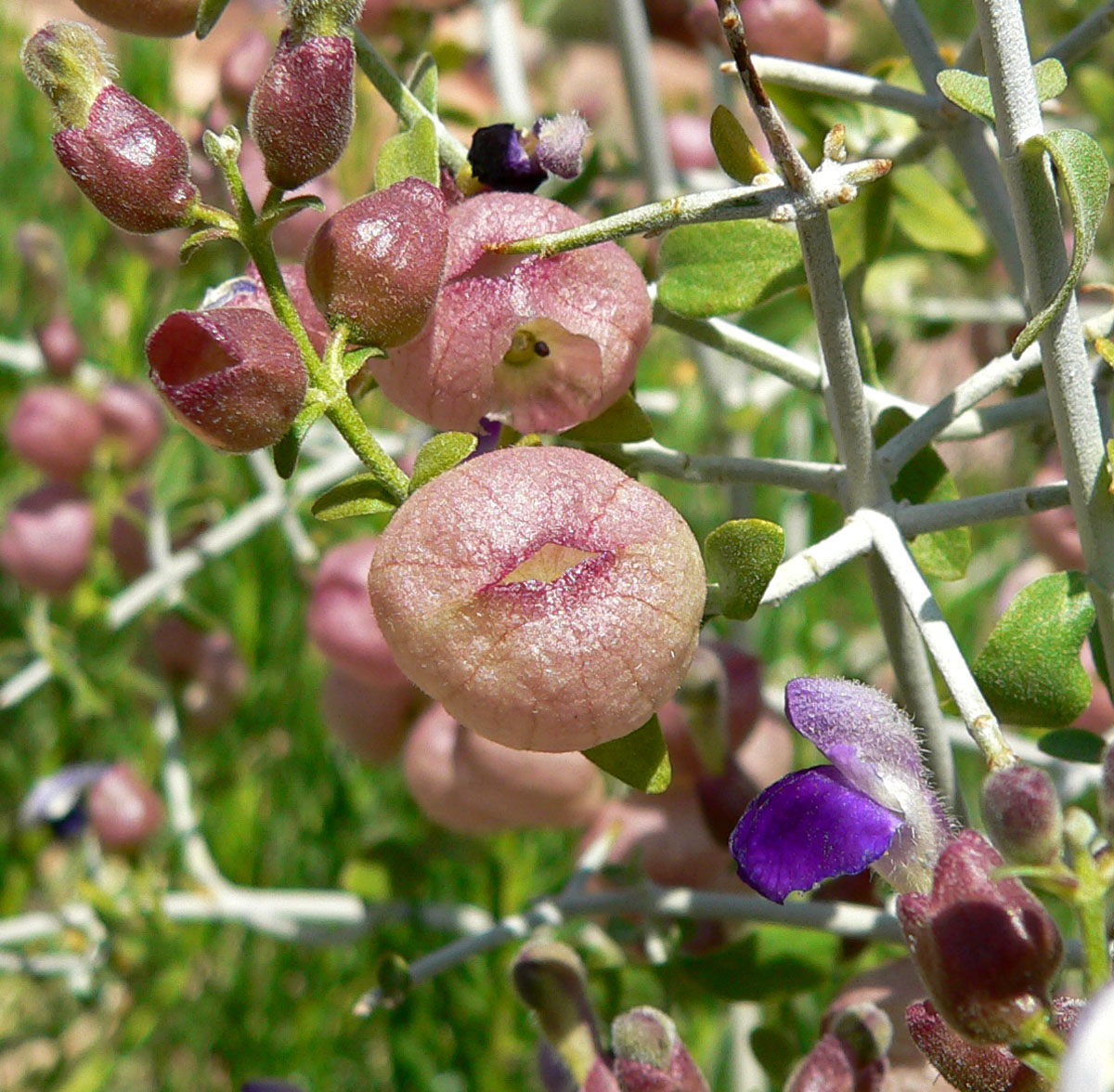- Salazaria
:"For the
butterfly genus , see "Salazaria (butterfly) .Taxobox
name = "Salazaria mexicana"

image_width = 240px
image_caption = View of "bags" and flower. Note the broken "bag" in top center, with a seed visible inside.
regnum =Plant ae
divisio =Magnoliophyta
classis =Magnoliopsida
ordo =Lamiales
familia =Lamiaceae
genus = "Salazaria"
species = "S. mexicana"
binomial = "Salazaria mexicana"
binomial_authority =Torrey "Salazaria mexicana", commonly known by variants on bladder sage or paperbag bush, is a
shrub of the mint familyLamiaceae distinctive for its calyx lobes that develop into small bag- or bladder-like shells around the fruits. Widespread in the southwestern part ofNorth America , it is the only member of its genus.This plant takes the form of a rounded shrub, typically 50-100 cm high, sometimes larger. The stems form a spreading rigid pattern, with the tips often becoming spine-like. The leaves are small, 3-15 mm long and 2-8 mm wide, ovate to elliptic, entire, and with a very short or nonexistent petiole. The 2-lipped flowers develop in pairs facing away from each other; the upper lip is white to light violet and hairy, while the lower lip is 3-lobed and intense dark violet. The calyx starts out as simply a base to the flower, reddish-purple in shade, and then as the flower ages, it expands into its distinctive bag shape, 1-2 cm across, the dried flower eventually falling out of the hole in the end.
Flowering is generally April through June, but the bags are durable and may last on the plant into winter, becoming dry and papery.
These bushes occupy a variety of habitats in their range, including washes, gravelly or sandy slopes, shrubland, and woodland, often growing intermixed with other shrubs. The range extends from the eastern slopes of the Sierra Nevada and the deserts of
California , east toTexas and south intoMexico . They are relatively common; although both the foliage and flowers are sparse, the distinctive pattern of bags makes them easy to spot from a distance.The genus is named after astronomer
José Salazar y Larregui , Mexican commissioner for theUnited States and Mexican Boundary Survey of 1848-55.References
* [http://ucjeps.berkeley.edu/cgi-bin/get_JM_treatment.pl?4745,4863,4864 Jepson manual treatment]
Wikimedia Foundation. 2010.
